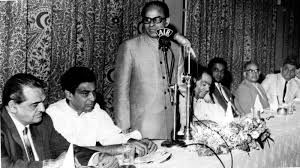India would love a big, beautiful trade pact with US: Nirmala Sitharaman

India’s Finance Minister, Nirmala Sitharaman, has openly expressed her enthusiasm for forging a substantial and comprehensive trade agreement with the United States. Terming the prospective pact as “big” and “beautiful,” Sitharaman’s remarks underline India’s willingness to deepen economic ties with the US amid a rapidly shifting global trade landscape. Such a deal, she believes, could unlock significant benefits for both countries, providing a platform for greater investment, job creation, and innovation.
Background: Growing Economic Ties
The economic relationship between India and the US has strengthened considerably over the past two decades. Today, the United States is one of India’s largest trading partners, with bilateral trade touching around $150 billion in recent years. The US is also a top destination for Indian exports, including pharmaceuticals, IT services, textiles, and agricultural products.
Conversely, India is an increasingly attractive market for American businesses eager to tap into its growing middle class and expanding infrastructure needs. US companies have invested billions in India, covering sectors like technology, manufacturing, energy, and financial services.
Despite this progress, both nations have periodically faced challenges in trade negotiations, often related to tariff barriers, intellectual property rights, data localization, and market access concerns. These issues have slowed the formation of a comprehensive trade agreement despite the apparent mutual interest.
Why a Big, Beautiful Trade Pact?
Sitharaman’s use of the phrase “big and beautiful” to describe the envisaged trade deal reflects India’s ambition for a broad-based agreement that goes beyond mere tariff reductions. Instead, the focus is on a comprehensive pact covering multiple facets of trade and investment, including services, digital economy, intellectual property protection, regulatory cooperation, and sustainable development.
This approach aligns with global trends in trade agreements, where modern pacts increasingly encompass areas like data flow, environmental standards, and labor protections alongside traditional trade issues. For India, a pact with the US that incorporates these elements could serve as a model for future deals with other partners.
Moreover, such a deal could help India secure its strategic economic interests, ensuring greater access to the US market while safeguarding sensitive domestic sectors. It would also enhance India’s attractiveness as an investment destination by clarifying regulations and providing investor protections.
Addressing Challenges Through Dialogue
While the vision for a trade pact is clear, several sticking points remain that both sides must navigate carefully. Key among these are issues related to agricultural tariffs, data security, intellectual property rights, and regulatory standards.
India has been cautious about opening its agricultural market fully, as farming remains a politically sensitive sector employing a large portion of its population. On the other hand, the US seeks greater market access for its farm exports and insists on strong protections for intellectual property, especially for pharmaceuticals and technology.
Data localization and digital trade rules are also contentious. India has introduced regulations requiring certain data to be stored domestically, which US tech companies argue can hinder global operations. Finding common ground on these rules will be essential for a deal that benefits both sides.
Sitharaman has emphasized the importance of dialogue and pragmatism in overcoming these challenges. She advocates for solutions that recognize India’s development needs and regulatory autonomy while creating predictable and fair market conditions.
Strategic and Economic Benefits
The potential advantages of a comprehensive India-US trade agreement extend beyond simple trade numbers. Economically, such a pact could lead to increased exports from India, helping to support manufacturing, agriculture, and the services sector.
For the US, deeper engagement with India means access to one of the fastest-growing consumer markets globally. American businesses could benefit from reduced tariffs, clearer regulations, and stronger protections for their investments.
Strategically, the pact would strengthen ties between two democracies amid increasing global geopolitical competition. Closer economic integration could support cooperation on broader issues such as technology standards, supply chain resilience, and climate change initiatives.
Moreover, a strong trade pact could encourage collaboration on innovation, research, and development. Given India’s growing IT sector and the US’s leadership in technology, joint ventures and partnerships could flourish, creating jobs and boosting competitiveness in both countries.
Global Trade Context
The call for a “big and beautiful” trade pact comes at a time when global trade dynamics are evolving rapidly. The rise of protectionism in some countries, supply chain disruptions caused by the COVID-19 pandemic, and geopolitical tensions have prompted nations to rethink trade strategies.
For India, which seeks to position itself as a global manufacturing hub under initiatives like “Make in India,” securing stable and predictable trade agreements is vital. A comprehensive pact with the US would reinforce India’s commitment to open trade while balancing domestic priorities.
The US, meanwhile, is recalibrating its trade policies to better support American workers and industries, making deals that emphasize fairness and sustainability more attractive. A well-crafted pact with India could exemplify this new approach, blending economic openness with social responsibility.
What Comes Next?
Moving forward, both countries will need to intensify negotiations with an open mind and mutual respect. Trade officials and ministers are expected to engage in technical talks to address specific issues and craft language that accommodates both parties’ concerns.
Sitharaman’s statement serves as a positive signal to markets and stakeholders that India is ready to move beyond past obstacles. However, the success of the deal will depend on political will, sustained dialogue, and pragmatic compromises.
Both nations have much to gain from a trade pact that is expansive in scope and mutually beneficial. If realized, it could mark a new chapter in India-US relations and set a benchmark for future international trade agreements.






